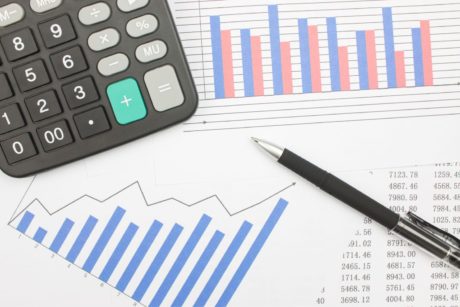This course is designed for those interested to learn the basics of financial statement and decision analysis with focus on the balance sheet. Read more.
Every course in EDUOLC is taught by top institutors in the industry. We provide video tutorials and a customized learning platform that empowers learners to train at their own pace. Besides our vast collection of online tutorials , Eduolc offers a continues stream of authentic content. Every course comprises a series of learning material created in high-quality videos. Eduolc is committed to building the best learning experience to bring world class training content and best learning practice
Access all courses in our library for only $9/month with All Access Pass
Get Started with All Access PassBuy Only This CourseAbout This Course
Who this course is for:
- Finance students
- Managers
- Accountants
- Anyone who wants to understand the principles and concept of costing and/or upgrade their skill in the area of accounting
What you’ll learn:
- How vertical and horizontal analysis of an income statement results in every income statement amount being used as a percent of net sales.
- How important annual reports are.
- Assets, liabilities, and equity of a business.
- Income statement analysis and its uses
- How cash flow is calculated
- DuPont analysis and multi-step financial equation that provides insight into a business’s fundamental performance.
Requirements:
- No prior knowledge is required to take this course.
This course will teach you the fundamentals of financial statement and decision analysis, with a focus on the balance sheet. One of the most basic qualities in the corporate world is the ability to assess a company’s results. And, let’s be honest, it’s not easy. It necessitates an in-depth knowledge of shareholder preferences, performance, liquidity, risk control, and operational quality. This course is designed to teach this dynamic analysis in the most straightforward manner possible. To get started, you don’t need any accounting or finance experience.
The course explains the basic material of financial statements in a clear and important context by visiting a real enterprise and interviewing real business people. The course aims to leave students with a lasting understanding of what a balance sheet is and what it shows.
This training is focused at non-financial, mid-to senior-level executives from all sectors and functional areas. This course would benefit executives in communications, distribution, human resources, manufacturing, or engineering, as well as general managers who have advanced along these paths, through their knowledge of financial analysis.
After completing the program, you will be able to communicate the financial goals and performances of your department within your organization as well as to outside sources. So, at the end of this course, you won’t just know how to read financial statements in general; you’ll also know how to relate them to your own company’s financial statements, giving you a much greater view of your own company’s financial success and what you can/need to do to either sustain or enhance it.
Our Promise to You
By the end of this course, you will have learned basic to intermediate financial statement analysis and financial analysis.
10 Day Money Back Guarantee. If you are unsatisfied for any reason, simply contact us and we’ll give you a full refund. No questions asked.
Get started today and learn more about the Financial Statement and Decision Analysis.
Course Curriculum
| Section 1: Introduction | |||
| Introduction | 00:00:00 | ||
| Section 2: Expenses And Income | |||
| Expenses And Income | 00:00:00 | ||
| Section 3: Concept Of Going Concern | |||
| Concept Of Going Concern | 00:00:00 | ||
| Section 4: T Accounts | |||
| Double Entry Bookkeeping | 00:00:00 | ||
| Section 5: Financial Statements | |||
| Accounts And Financial Statements | 00:00:00 | ||
| Section 6: Vertical And Horizontal Analysis | |||
| Vertical And Horizontal Analysis | 00:00:00 | ||
| Section 7: Profitability, Liquidity And Solvency | |||
| Profitability Of A Company | 00:00:00 | ||
| Liquidity And Solvency | 00:00:00 | ||
| Section 8: Cashflow Analysis | |||
| Cashflow Analysis | 00:00:00 | ||
| Section 9: Understanding Annual Report | |||
| Understanding Annual Report | 00:00:00 | ||
| Annual Performance | 00:00:00 | ||
| Consolidated Balance Sheet | 00:00:00 | ||
| Section 10: Balance Sheet Vertical | |||
| Total Non Current Assets | 00:00:00 | ||
| Cash And Cash Equivalents | 00:00:00 | ||
| Non Current Assets | 00:00:00 | ||
| Non Current Liabilities | 00:00:00 | ||
| Percentage Of Equity | 00:00:00 | ||
| Section 11: Balance Sheet Horizontal | |||
| Horizontal Analysis Of Balance Sheet | 00:00:00 | ||
| Long Term Liabilities | 00:00:00 | ||
| Section 12: Income Statement Analysis | |||
| Income Statement Analysis | 00:00:00 | ||
| Profit And Loss | 00:00:00 | ||
| Compounded Annual Growth Rate | 00:00:00 | ||
| Section 13: Ratio Analysis | |||
| Profitability Ratio Analysis | 00:00:00 | ||
| Net Profit Margin | 00:00:00 | ||
| Calculating Total Asset | 00:00:00 | ||
| Calculating Profitability Ratios | 00:00:00 | ||
| Section 14: Solvency | |||
| Solvency Ratio | 00:00:00 | ||
| Debt Ratio | 00:00:00 | ||
| Debt Service Coverage Ratio | 00:00:00 | ||
| Interest Coverage Ratio | 00:00:00 | ||
| Current Operating Income | 00:00:00 | ||
| Capital Structure Ratio | 00:00:00 | ||
| Section 15: Liquidity | |||
| Liquidity Ratio | 00:00:00 | ||
| Asset Test Ratio | 00:00:00 | ||
| Cash Flow Ratio | 00:00:00 | ||
| Operating Cash Flow | 00:00:00 | ||
| Cash Flow Coverage Ratio | 00:00:00 | ||
| Section 16: Asset Turnover | |||
| Asset Efficiency Ratio | 00:00:00 | ||
| Asset Turnover | 00:00:00 | ||
| Calculating Asset Efficiency | 00:00:00 | ||
| Accounts Payable Turnover | 00:00:00 | ||
| Days Payable Outstanding | 00:00:00 | ||
| Accounts Payable Turnover Ratio | 00:00:00 | ||
| Cash Conversion Cycle | 00:00:00 | ||
| Defensive Interval Ratio | 00:00:00 | ||
| Section 17: DuPont Analysis | |||
| DuPont Analysis | 00:00:00 | ||
| Calculating Terms | 00:00:00 | ||
| Section 18: Enterprise Value | |||
| Enterprise Value | 00:00:00 | ||
| Market Capital | 00:00:00 | ||
| Preferred Share Capital | 00:00:00 | ||
| EBITDA Ratio | 00:00:00 | ||
| Section 19: Price To Earning | |||
| Price To Earning Ratio | 00:00:00 | ||
| Section 20: DPS and EPS | |||
| DPS and EPS | 00:00:00 | ||
| Dividend Per Share | 00:00:00 | ||
| Section 21: PEG Ratio | |||
| PEG Ratio | 00:00:00 | ||
| Section 22: Application Analysis | |||
| Purpose Of Using Ratios | 00:00:00 | ||
| Section 23: Conclusion | |||
| Conclusion | 00:00:00 | ||
About This Course
Who this course is for:
- Finance students
- Managers
- Accountants
- Anyone who wants to understand the principles and concept of costing and/or upgrade their skill in the area of accounting
What you’ll learn:
- How vertical and horizontal analysis of an income statement results in every income statement amount being used as a percent of net sales.
- How important annual reports are.
- Assets, liabilities, and equity of a business.
- Income statement analysis and its uses
- How cash flow is calculated
- DuPont analysis and multi-step financial equation that provides insight into a business’s fundamental performance.
Requirements:
- No prior knowledge is required to take this course.
This course will teach you the fundamentals of financial statement and decision analysis, with a focus on the balance sheet. One of the most basic qualities in the corporate world is the ability to assess a company’s results. And, let’s be honest, it’s not easy. It necessitates an in-depth knowledge of shareholder preferences, performance, liquidity, risk control, and operational quality. This course is designed to teach this dynamic analysis in the most straightforward manner possible. To get started, you don’t need any accounting or finance experience.
The course explains the basic material of financial statements in a clear and important context by visiting a real enterprise and interviewing real business people. The course aims to leave students with a lasting understanding of what a balance sheet is and what it shows.
This training is focused at non-financial, mid-to senior-level executives from all sectors and functional areas. This course would benefit executives in communications, distribution, human resources, manufacturing, or engineering, as well as general managers who have advanced along these paths, through their knowledge of financial analysis.
After completing the program, you will be able to communicate the financial goals and performances of your department within your organization as well as to outside sources. So, at the end of this course, you won’t just know how to read financial statements in general; you’ll also know how to relate them to your own company’s financial statements, giving you a much greater view of your own company’s financial success and what you can/need to do to either sustain or enhance it.
Our Promise to You
By the end of this course, you will have learned basic to intermediate financial statement analysis and financial analysis.
10 Day Money Back Guarantee. If you are unsatisfied for any reason, simply contact us and we’ll give you a full refund. No questions asked.
Get started today and learn more about the Financial Statement and Decision Analysis.
Course Curriculum
| Section 1: Introduction | |||
| Introduction | 00:00:00 | ||
| Section 2: Expenses And Income | |||
| Expenses And Income | 00:00:00 | ||
| Section 3: Concept Of Going Concern | |||
| Concept Of Going Concern | 00:00:00 | ||
| Section 4: T Accounts | |||
| Double Entry Bookkeeping | 00:00:00 | ||
| Section 5: Financial Statements | |||
| Accounts And Financial Statements | 00:00:00 | ||
| Section 6: Vertical And Horizontal Analysis | |||
| Vertical And Horizontal Analysis | 00:00:00 | ||
| Section 7: Profitability, Liquidity And Solvency | |||
| Profitability Of A Company | 00:00:00 | ||
| Liquidity And Solvency | 00:00:00 | ||
| Section 8: Cashflow Analysis | |||
| Cashflow Analysis | 00:00:00 | ||
| Section 9: Understanding Annual Report | |||
| Understanding Annual Report | 00:00:00 | ||
| Annual Performance | 00:00:00 | ||
| Consolidated Balance Sheet | 00:00:00 | ||
| Section 10: Balance Sheet Vertical | |||
| Total Non Current Assets | 00:00:00 | ||
| Cash And Cash Equivalents | 00:00:00 | ||
| Non Current Assets | 00:00:00 | ||
| Non Current Liabilities | 00:00:00 | ||
| Percentage Of Equity | 00:00:00 | ||
| Section 11: Balance Sheet Horizontal | |||
| Horizontal Analysis Of Balance Sheet | 00:00:00 | ||
| Long Term Liabilities | 00:00:00 | ||
| Section 12: Income Statement Analysis | |||
| Income Statement Analysis | 00:00:00 | ||
| Profit And Loss | 00:00:00 | ||
| Compounded Annual Growth Rate | 00:00:00 | ||
| Section 13: Ratio Analysis | |||
| Profitability Ratio Analysis | 00:00:00 | ||
| Net Profit Margin | 00:00:00 | ||
| Calculating Total Asset | 00:00:00 | ||
| Calculating Profitability Ratios | 00:00:00 | ||
| Section 14: Solvency | |||
| Solvency Ratio | 00:00:00 | ||
| Debt Ratio | 00:00:00 | ||
| Debt Service Coverage Ratio | 00:00:00 | ||
| Interest Coverage Ratio | 00:00:00 | ||
| Current Operating Income | 00:00:00 | ||
| Capital Structure Ratio | 00:00:00 | ||
| Section 15: Liquidity | |||
| Liquidity Ratio | 00:00:00 | ||
| Asset Test Ratio | 00:00:00 | ||
| Cash Flow Ratio | 00:00:00 | ||
| Operating Cash Flow | 00:00:00 | ||
| Cash Flow Coverage Ratio | 00:00:00 | ||
| Section 16: Asset Turnover | |||
| Asset Efficiency Ratio | 00:00:00 | ||
| Asset Turnover | 00:00:00 | ||
| Calculating Asset Efficiency | 00:00:00 | ||
| Accounts Payable Turnover | 00:00:00 | ||
| Days Payable Outstanding | 00:00:00 | ||
| Accounts Payable Turnover Ratio | 00:00:00 | ||
| Cash Conversion Cycle | 00:00:00 | ||
| Defensive Interval Ratio | 00:00:00 | ||
| Section 17: DuPont Analysis | |||
| DuPont Analysis | 00:00:00 | ||
| Calculating Terms | 00:00:00 | ||
| Section 18: Enterprise Value | |||
| Enterprise Value | 00:00:00 | ||
| Market Capital | 00:00:00 | ||
| Preferred Share Capital | 00:00:00 | ||
| EBITDA Ratio | 00:00:00 | ||
| Section 19: Price To Earning | |||
| Price To Earning Ratio | 00:00:00 | ||
| Section 20: DPS and EPS | |||
| DPS and EPS | 00:00:00 | ||
| Dividend Per Share | 00:00:00 | ||
| Section 21: PEG Ratio | |||
| PEG Ratio | 00:00:00 | ||
| Section 22: Application Analysis | |||
| Purpose Of Using Ratios | 00:00:00 | ||
| Section 23: Conclusion | |||
| Conclusion | 00:00:00 | ||




